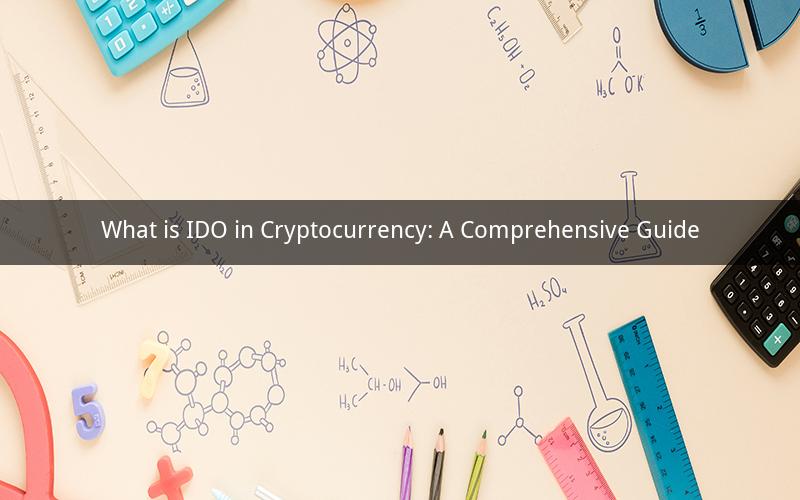
Introduction:
In the rapidly evolving world of cryptocurrency, the term "IDO" has gained significant attention. If you are new to this space or even an experienced investor, understanding what IDO stands for and how it works is crucial. In this article, we will delve into the concept of IDO, its significance in the cryptocurrency ecosystem, and its potential impact on investors.
Section 1: Understanding IDO
1.1 What is IDO?
IDO stands for Initial DEX Offering, which is a unique fundraising method in the cryptocurrency industry. It involves the sale of tokens on decentralized exchanges (DEXs) rather than centralized exchanges. Unlike the traditional Initial Coin Offering (ICO), IDO allows investors to purchase tokens directly from the project team through a decentralized platform.
1.2 How does IDO work?
The process of an IDO typically involves the following steps:
a. The project team announces the IDO, providing details such as the token name, supply, and price.
b. Participants register for the IDO, often by locking their tokens or participating in a lottery.
c. The IDO commences, and interested investors can purchase tokens at the announced price.
d. Once the token sale is over, the tokens are usually distributed to the investors' wallets.
1.3 Why choose IDO over ICO?
Several reasons make IDO a preferred fundraising method over ICO:
a. Lower regulatory barriers: IDO is less regulated compared to ICO, making it easier for projects to conduct token sales.
b. Decentralized nature: IDO operates on decentralized exchanges, providing a level playing field for all participants.
c. Community-driven: IDO encourages community engagement and participation, fostering a sense of ownership among investors.
Section 2: Benefits and Risks of IDO
2.1 Benefits of IDO
a. Accessibility: IDO allows investors from different geographical locations to participate, promoting a diverse and inclusive market.
b. Transparency: Since IDO operates on decentralized exchanges, the process is transparent, reducing the risk of fraud.
c. Faster funding: IDO provides a quicker fundraising mechanism compared to traditional fundraising methods.
2.2 Risks of IDO
a. High volatility: The cryptocurrency market is known for its volatility, which can impact the value of tokens during and after the IDO.
b. Project legitimacy: There is always a risk of fraudulent projects using IDO as a means to raise funds without delivering on their promises.
c. Security concerns: As IDO operates on DEXs, it is crucial to ensure the security of the platform and the participants' wallets.
Section 3: IDO in Practice
3.1 Top IDO Platforms
Several decentralized exchanges have emerged as preferred platforms for IDO, including:
a. Uniswap: A leading DEX platform that has hosted numerous successful IDOs.
b. SushiSwap: Another popular DEX platform known for its user-friendly interface and active community.
c. Curve Finance: A DEX platform focusing on stablecoins and liquidity pools, offering unique opportunities for IDO participants.
3.2 Successful IDO Examples
Several projects have achieved remarkable success through IDO, including:
a. ApeCoin (APE): A token for the Bored Ape Yacht Club (BAYC) community, launched through an IDO on OpenSea.
b. Ocean Protocol (OCEAN): A platform that facilitates data sharing and decentralized marketplaces, raising significant funds through an IDO on Curve Finance.
c. Fetch.ai (FET): A decentralized AI platform that has successfully conducted several IDOs, including on SushiSwap and Curve Finance.
Section 4: Future of IDO
4.1 Evolution of IDO
As the cryptocurrency market continues to evolve, the IDO landscape is expected to change. Some potential trends include:
a. Increased regulatory scrutiny: As IDO gains popularity, regulators may impose stricter guidelines to ensure compliance and protect investors.
b. Enhanced security measures: Projects will likely focus on implementing advanced security measures to safeguard participants' interests.
c. Expansion of use cases: IDO may find its way into other industries, beyond just cryptocurrency, as a fundraising mechanism.
4.2 Potential Challenges
Despite the promising future of IDO, some challenges may arise, such as:
a. Market saturation: As more projects adopt IDO as a fundraising method, the market may become saturated, leading to increased competition.
b. Regulatory hurdles: Projects may face challenges in navigating the complex regulatory landscape of different countries.
Conclusion:
IDO has emerged as a popular fundraising method in the cryptocurrency space, offering several advantages over traditional ICOs. By understanding the concept, benefits, risks, and future of IDO, investors can make informed decisions and participate in this exciting fundraising mechanism.
Questions:
1. What are the key differences between IDO and ICO?
2. Can you explain the concept of liquidity pools in IDO?
3. How does the security of IDO compare to that of centralized exchanges?
4. What factors should investors consider before participating in an IDO?
5. How might the future of IDO impact the cryptocurrency market?